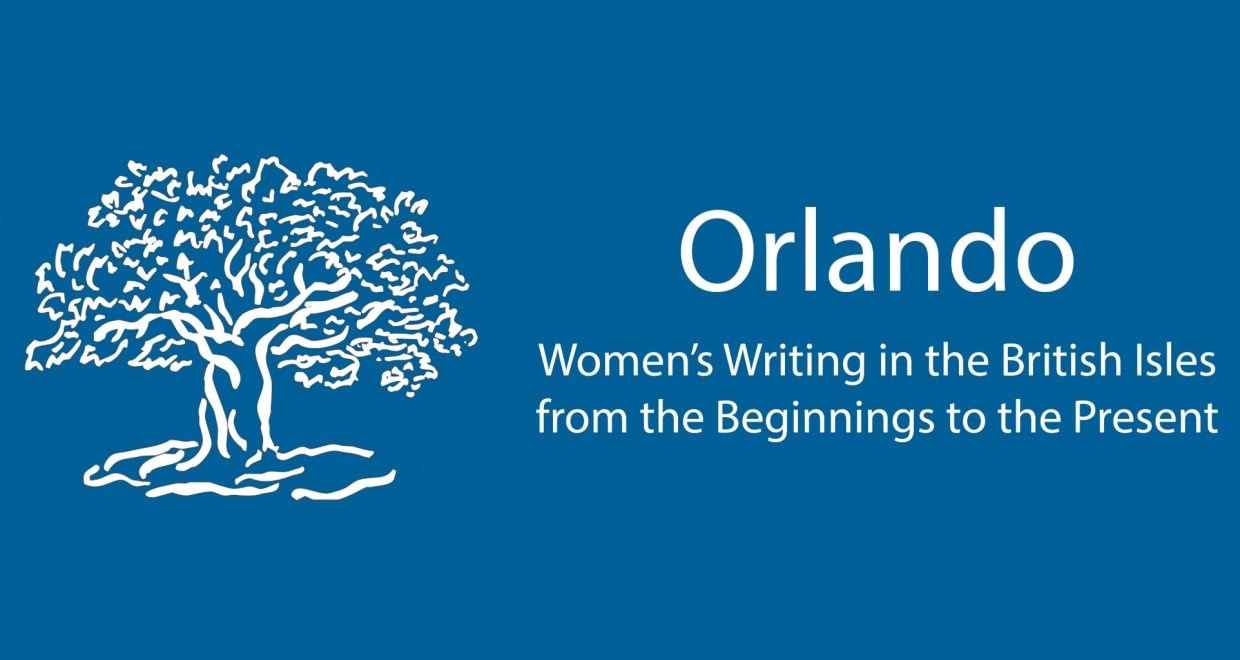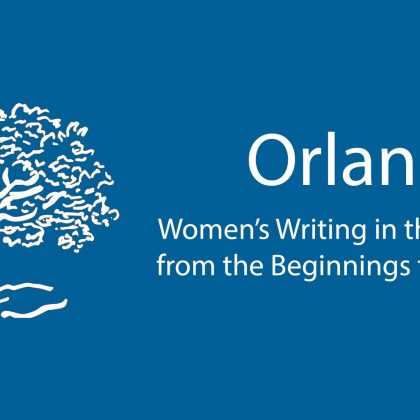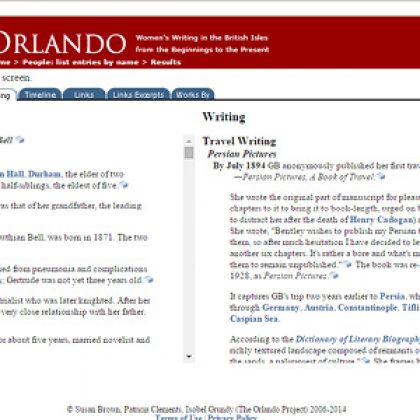Orlando and women’s suffrage – Part 3
Orlando: Women’s Writing in the British Isles from the Beginnings to the Present is a digital text, available on the web at orlando.cambridge.org. We like to call it a textbase, not a database, because it doesn’t do bean-counting, but connected historical-critical prose, written by an ever-expanding list of scholars and students. Orlando consists of entries on individual writers. It is centred on British women, but includes some selected male and non-British writers, because literature is a territory without frontiers – and contextual historical material. Orlando will be free to access for the whole of March, Women’s History Month.
More Heroines
I imagine you’ve all heard of Emmeline Pankhurst and Millicent Fawcett. They represent the violent and the non-violent wings of the suffrage army. Pankhurst already has a public memorial in London, and there’s a petition circulating right now for one of Fawcett. But even for details of their lives, as well as for other less-sung heroines we really need sources like Orlando.
Let’s look at four heroines who ought to be better known. Mary Gawthorpe (1881-1973) was a working-class Yorkshire woman, whose memoirs (Up Hill to Holloway) record growing up in a slum with no indoor toilet.
At night you used a pot under the bed, she says, but in daytime you had to walk “up the street to those frightful closets emptied by the nightsoil men in the hours between midnight and dawn.” These were later replaced by “trough water-closets . . . two families to a closet,” which were flushed from time to time by a whoosh of centrally-propelled water over which the user had no control. It was the suffrage cause that started Gawthorpe writing, when she was a young schoolteacher and already politically and socially active. Despite terrible health (made worse by force-feeding in prison), she was for years a travelling speaker for the Women’s Social and Political Union, and joint editor of The Freewoman. She might be better known today if she had not immigrated to the USA in 1916.
A contrast with Mary Gawthorpe is Lady Constance Lytton, who was born to privilege. She was the daughter of an earl and descendant of writers both male and female. Anna Wheeler, joint-author of the landmark text Appeal of One Half the Human Race, Women, 1825, was her great-grandmother. Her elder brother became an earl in his turn, and both of her sisters married prominent men. Constance was the shy, delicate one who never married; she had a love-affair with someone still unidentified, which didn’t work out but caused her much pain. She lived at home serving as social secretary to her formidable mother. She was about forty when progressive and feminist friends took her to visit suffragettes in prison in Holloway, and she never looked back.
Constance Lytton joined the WSPU, the Women’s Social and Political Union, to the consternation of her mother, who thought its methods were “wicked and wrong”. Constance went from behind-the-scenes work to courting imprisonment. When she was put in the prison hospital because of her heart condition she worked to secure transfer to the prison proper, but she was released on medical grounds without being force-fed. (She was amazed that the central police station of a great city – Newcastle – “could be so dirty.”)
It was in talking to Mary Gawthorpe that Lytton realized how treatment in prison was affected by the social class of the prisoner. She set out to construct a false identity for herself as “Miss Jane Warton”, a working seamstress, with short, semi-bleached hair, cheap clothes, a horrible hat, and glasses. Reactions of people in the street assured her that she was now indeed ugly, a version of the Punch caricature of a typical suffragette. They treated her differently in prison too. She was force-fed without a medical examination, and a doctor slapped her. Once released, she set out to make publicity out of all this, and like Mary Gawthorpe she joined the WSPU payroll as a full-time organizer. Accusations of lying flew back and forth between her and various government agents; she was strongly supported by her brother the earl and by her sisters. Her Prison and Prisoners: Some Personal Experiences, 1914, written with her left hand after her right was disabled by a stroke, is just as well worth reading as Gawthorpe’s Up Hill to Holloway.
Another heroine is Evelyn Sharp, sister of Cecil Sharp the folklorist, who was working as a journalist when an encounter with suffragists “changed the whole course of her life.” Like both Lytton and Gawthorpe she had a supportive family (in her case large and middle-class) whom she boldly left in her early twenties to live in London and support herself. She was moved when her mother, who had made her promise to try not to land in prison for suffrage activity, released her from the promise, saying she must be free to choose her course for herself. She felt grateful for training from her cricket-playing brothers when her “pacifist hand” scored a direct smash with almost every stone she threw at government windows. Like Gawthorpe she lectured in the face of hostility expressed in missiles like rotten tomatoes and live mice. She was a terrific public speaker: “driven to speech,” said her long-term lover and eventual husband Henry Nevinson, “by a white-hot indignation that blazed in her words rather than in outward gesture or visible emotion.”
Evelyn Sharp was already a full-time professional writer when she joined the suffrage cause. She was discontinued by the Daily Chronicle in 1907 on grounds that her views on suffrage were “likely to be unacceptable to some readers.” Four years later she wrote by hand a long letter to the editor of the Guardian while she waited at Bow Street Police Court. She poured her white-hot indignation into suffrage pamphlets (as Gawthorpe and Lytton did too), and like them she wrote a memoir that is eminently worth reading, hers being Unfinished Adventure, published in 1933. But I’d recommend even more strongly than Unfinished Adventure Sharp’s book of true stories about suffragists, Rebel Women, 1910. The subject brought out the best in all these writers.
Our final heroine, Kate Parry Frye (1878-1959), is different. She was an actress who on the side wrote little plays, only one of which was ever printed. She would never have had an entry in Orlando if she hadn’t kept a diary (which she did from the ages of nine to eighty-one).
She is one of those lost writers whom Virginia Woolf imagined being rescued by a search-party of scholars carrying lights through the darkness. Her diaries lay for fifty years in a cellar in North London, where they were found damp and mildewed by Elizabeth Crawford, a feminist bookseller who keeps a website called “Woman and Her Sphere”. Crawford published a selection in 2013 as Campaigning for the Vote: Kate Parry Frye’s Suffrage Diary, and she published selections from the non-suffrage years as an e-book.
As Elizabeth Crawford writes, the significance of Kate Parry Fry’s work for the vote is that she was not a leader like the other heroines mentioned, but a foot-soldier of the movement. She glimpsed the leaders from afar, commented on their approaches, and found Maude Royden’s preaching most interesting (“how she would shock some people I can think of!”). She had to balance her suffrage support with her professional acting; what made her truly commit herself was the shock of opposition: “I felt sick for hours. It was a most horrible experience. I have rarely been in anything more unpleasant—it was ghastly and the loud laughter & hideous remarks of the men—so-called gentlemen—even of the correctly attired top-hatted kind—was truly awful.”
And so, like others, she got a full-time job with the WSPU. She organized, marched, entertained, went on lecture tours, and handed out pamphlets. She was one of those who proved that ordinary women can make a difference, and those women, ordinary and extraordinary, are still making a difference a hundred years later.
Access Orlando for free for the whole of March, Women’s History Month.





